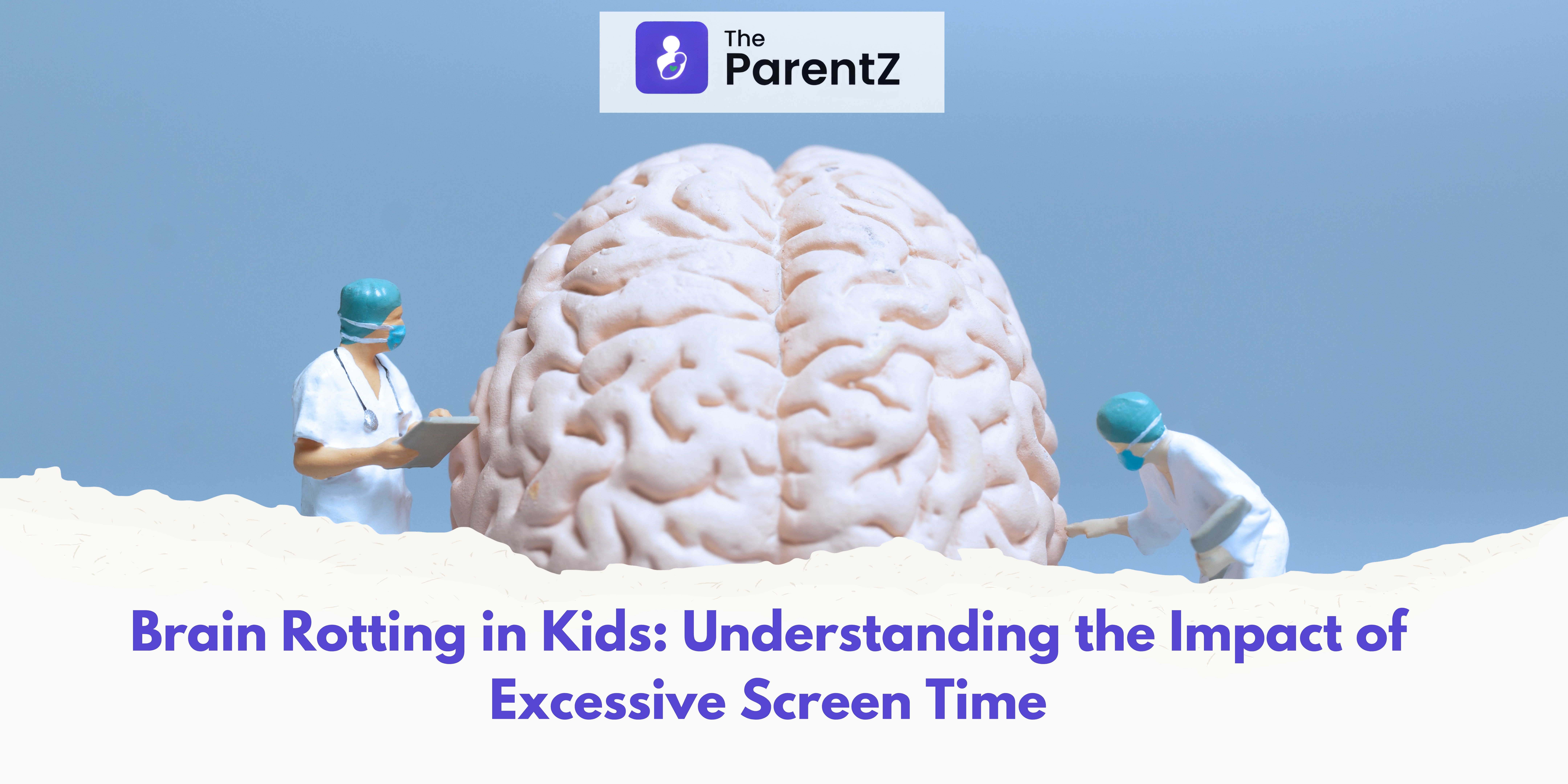In the modern digital age, children are spending more time than ever in front of screens. From smartphones and tablets to computers and televisions, screens have become a central part of daily life. However, excessive screen time has raised concerns among parents, educators, and healthcare professionals about its potential impact on children's brain development. This article explores the concept of "brain rotting" in kids, examining the effects of too much screen time and offering practical strategies to mitigate these effects.
What is Brain Rotting?
"Brain rotting" is a colloquial term used to describe the negative effects of excessive screen time on children's cognitive and behavioral development. While it is not a medical diagnosis, it highlights concerns about how prolonged exposure to screens can impair brain function, leading to issues such as reduced attention span, delayed language development, and poor social skills.
The Science Behind Brain Development
To understand how excessive screen time affects the brain, it's important to know how the brain develops. During early childhood, the brain undergoes rapid growth and forms neural connections through experiences and interactions. Activities like playing, reading, and engaging in face-to-face communication are crucial for healthy brain development. These activities help develop skills such as critical thinking, problem-solving, and emotional regulation.
How Excessive Screen Time Affects the Brain
- Reduced Attention Span: Fast-paced and highly stimulating content on screens can condition the brain to expect constant stimulation. This makes it difficult for children to focus on slower-paced activities, such as reading or listening to a teacher.
- Delayed Language Development: Children learn language through interaction with caregivers and peers. Excessive screen time can reduce the amount of verbal interaction, leading to delays in speech and language skills.
- Impaired Social Skills: Screens often replace face-to-face interactions, which are essential for learning social cues and developing empathy. Children who spend too much time on screens may struggle with making eye contact, understanding body language, and forming relationships.
- Sleep Disruptions: The blue light emitted by screens can interfere with the production of melatonin, a hormone that regulates sleep. This can lead to difficulties falling asleep and poor sleep quality, which in turn affects overall brain function and development.
- Decreased Physical Activity: Time spent on screens is often sedentary. Lack of physical activity can affect not only physical health but also cognitive development, as exercise is known to enhance brain function and learning.
Recognizing the Signs of Excessive Screen Time
Parents and educators should be aware of the signs that a child may be spending too much time on screens. These signs include:
- Decreased interest in non-screen activities: If a child shows little interest in playing outside, reading, or other hobbies, it may be a sign of excessive screen time.
- Difficulty focusing: Trouble paying attention in school or during conversations can indicate that a child’s attention span has been affected.
- Social withdrawal: Preferring screen-based activities over interacting with family and friends can be a warning sign.
- Mood changes: Increased irritability, anxiety, or sadness can result from excessive screen exposure.
- Sleep issues: Difficulty falling asleep, staying asleep, or waking up tired can be related to screen time, especially before bed.
Practical Strategies to Reduce Screen Time
To mitigate the effects of excessive screen time, it’s important to create a balanced environment that promotes healthy brain development. Here are some practical strategies:
- Set Clear Limits: Establish and enforce rules for screen time. The American Academy of Pediatrics recommends no more than one hour of screen time per day for children aged 2 to 5 years and consistent limits for older children.
- Encourage Alternative Activities: Promote activities that don’t involve screens, such as playing outside, reading books, doing puzzles, or engaging in arts and crafts.
- Create Screen-Free Zones: Designate certain areas of the home, such as the dining room and bedrooms, as screen-free zones to encourage family interaction and better sleep habits.
- Be a Role Model: Demonstrate healthy screen habits by limiting your own screen time and engaging in activities that don’t involve screens.
- Plan Screen-Free Times: Set aside specific times each day for screen-free activities, such as family game night, outdoor playtime, or reading together.
- Use Technology Wisely: Choose high-quality, educational content for screen time and watch together to make it a shared, interactive experience.
- Encourage Social Interaction: Arrange playdates and encourage your child to participate in group activities and sports to develop social skills and build friendships.
The Role of Parents and Educators
Parents and educators play a critical role in managing screen time and promoting healthy brain development. Here are some additional tips for fostering a balanced digital environment:
- Monitor Screen Use: Keep track of how much time your child spends on screens and what they are watching or playing.
- Discuss Screen Time: Talk to your child about the importance of balancing screen time with other activities and the potential effects of too much screen exposure.
- Create a Routine: Establish a daily routine that includes a variety of activities, ensuring that screen time is just one part of a balanced day.
- Stay Informed: Keep up-to-date with the latest research and guidelines on screen time to make informed decisions about your child’s media use.
Conclusion
Excessive screen time can have significant effects on children’s brain development, leading to issues such as reduced attention span, delayed language skills, and impaired social abilities. By understanding the potential risks and implementing practical strategies to reduce screen time, parents and educators can help ensure healthy cognitive and social development in children. Remember, the goal is not to eliminate screens entirely but to create a balanced environment that fosters a variety of enriching activities and experiences.
References
- American Academy of Pediatrics. (2021). Media and Children Communication Toolkit.
- World Health Organization. (2019). Guidelines on Physical Activity, Sedentary Behaviour, and Sleep for Children under 5 Years of Age.
- Common Sense Media. (2020). The Common Sense Census: Media Use by Kids Age Zero to Eight.
By staying informed and proactive, we can protect our children from the potential negative effects of excessive screen time and promote a healthy, balanced approach to digital media.








Be the first one to comment on this story.